Hawaii’s Kilauea volcano started erupting at the end of the last week after the archipelago’s Big Island was shaken by two earthquakes. The volcano sent lava into Hawaiian communities, forcing thousands of people to flee from their mountainside homes. Up to 10,000 people have been asked to evacuate following the eruption.
The authorities have reported high levels of toxic sulfur gas that could threaten the elderly and people with breathing problems, while scientists said that lava had spewed more than 61 meters into the air. The number of destroyed homes has jumped to 26, according to the latest reports.
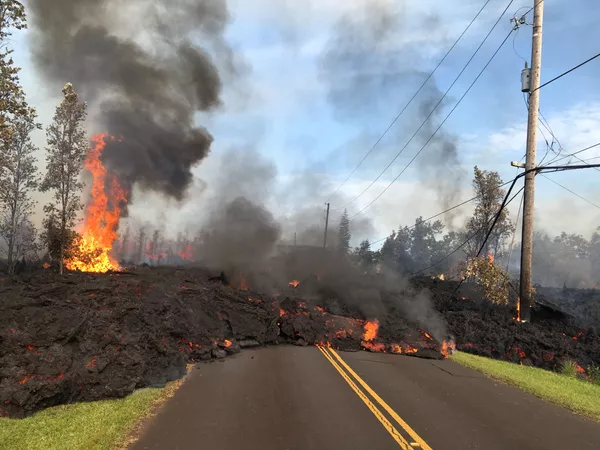
Lava advances along a street near a fissure in Leilani Estates, on the Kilauea volcano's lower East Rift Zone, Hawaii, the US, on May 5, 2018.
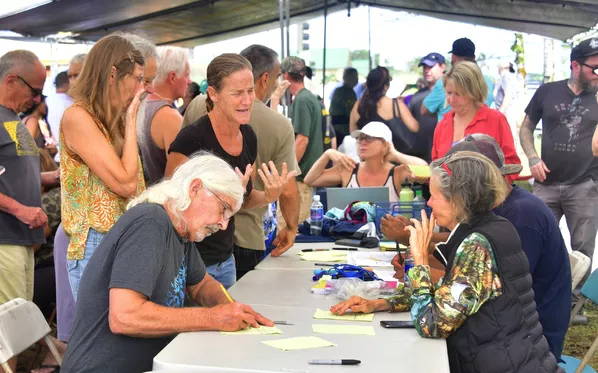
Evacuees fill out forms before being allowed to return to their Leilani Estates homes to gather their belongings on May 6, 2018, near Pahoa, Hawaii.
The Kilauea volcano, the most active in Hawaii, remained highly unstable that day, as lava spouted into the air and fissures emitted deadly gases.
The Kilauea volcano, the most active in Hawaii, remained highly unstable that day, as lava spouted into the air and fissures emitted deadly gases.
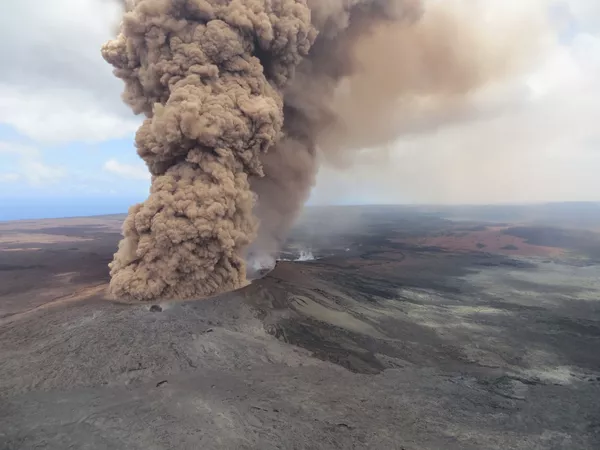
3/12
© AP Photo / U.S. Geological Survey
On May 4, 2018, the US Geological Survey released an aerial image with a column of robust, reddish-brown ash plume after a magnitude 6.9 earthquake shook the Big Island of Hawaii. The Kilauea volcano sent more lava into Hawaiian communities the next day, forcing more than 1,500 people to flee from their mountainside homes. The authorities detected high levels of sulfur gas that could threaten the elderly and people with breathing problems.

4/12
© AP Photo / Marco Garcia
This photo shows some of the 1990 lava flow from Kilauea, one of the world's most active volcanoes. Hawaiian officials said the decimated homes were in the subdivision, where molten rock, toxic gas and steam had been bursting through openings in the ground created by the Kilauea volcano.

5/12
© AP Photo / Marco Garcia
Laura Dawn is seen in her truck loaded with her possessions as she and her husband flee on May 6. Their property is just below the active volcano and they fear that their land will get covered in lava. They are moving further upcoast to a safer area.
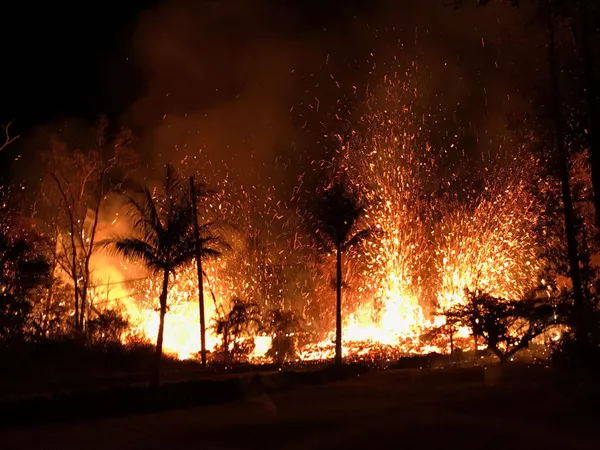
A new fissure spraying lava fountains as high as about 230 feet (70 m), according to a United States Geological Survey.
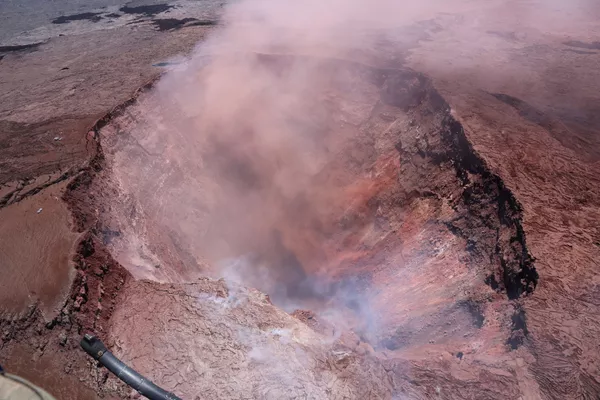
The Kilauea volcano's Pu'u 'O'o crater is seen in this aerial image after the volcano erupted following a series of earthquakes on May 3.
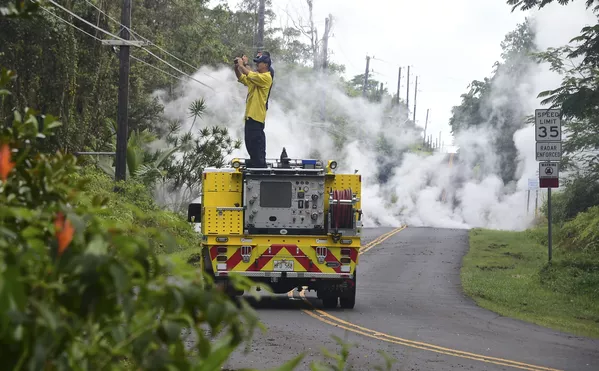
A firefighter takes photos near steam rising from a fissure in the Leilani Estates subdivision on Hawaii's Big Island on May 4, 2018.
Up to 10,000 people have been asked to leave their homes on Hawaii's Big Island following the eruption of the Kilauea volcano that came after a series of recent earthquakes.
Up to 10,000 people have been asked to leave their homes on Hawaii's Big Island following the eruption of the Kilauea volcano that came after a series of recent earthquakes.
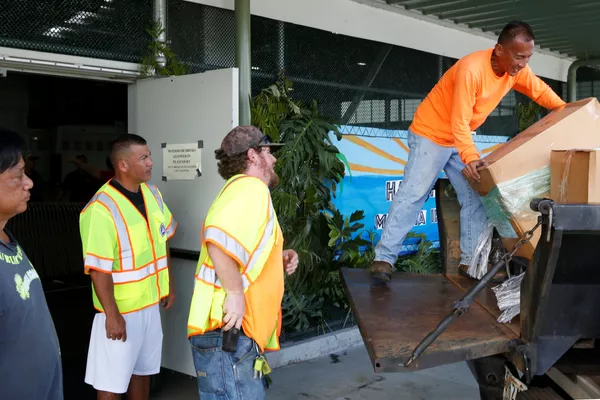
County workers deliver cots and blankets to an evacuation center in Pahoa available to residents of the Puna communities of the Leilani Estates and Lanipuna Gardens who were forced to leave their homes after the Kilauea volcano erupted in Hawaii on May 4, 2018.
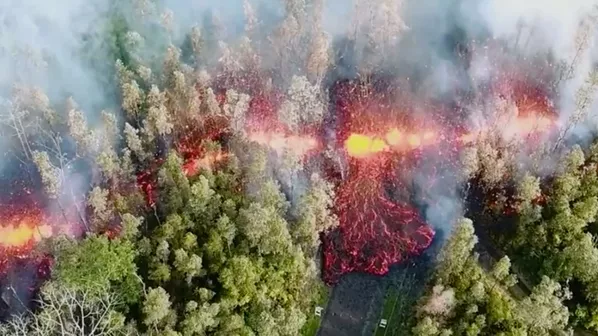
Lava emerges from the ground after the Kilauea volcano erupted on Hawaii's Big Island on May 3, 2018.
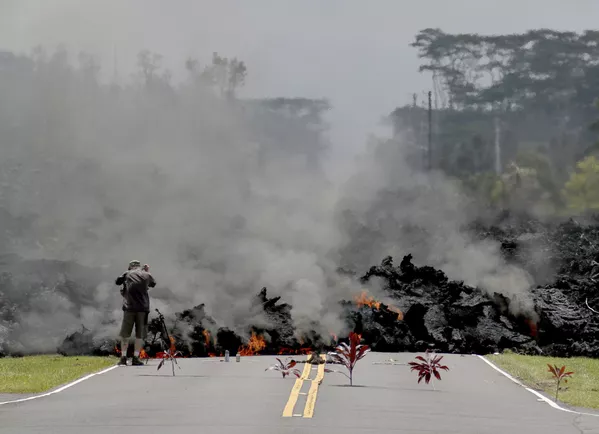
11/12
© AP Photo / Caleb Jones
Lava burns across a road in the Leilani Estates subdivision as an unidentified person takes pictures of the flow on May 5, 2018, near Pahoa, Hawaii. Offerings of Hawaiian ti leaves, rocks and cans to the fire goddess Pele lie in the street in front of the lava.
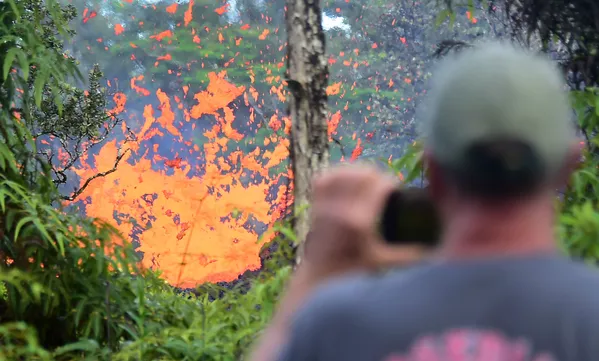
A man watches as lava is seen spewing from a fissure in the Leilani Estates subdivision near the town of Pahoa on Hawaii's Big Island on May 4, as up to 10,000 people were asked to leave their homes following the eruption of the Kilauea volcano that came after a series of recent earthquakes.

